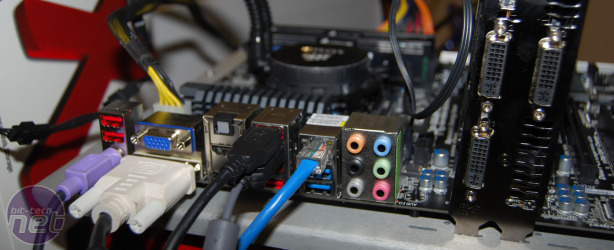What is Lucid Virtu?
Manufacturer LucidLogixLucid Virtu is a piece of software that takes advantage of the Z68 chipset's support for hybrid graphics. There are two key elements of Virtu – firstly, unlike the company's Hydra system of combining the performance of any two graphics cards, there’s no Lucid hardware involved in Virtu. Secondly, you’ll need to install the Virtu software to get the benefits of hybrid graphics.
Virtu is referred to as ‘virtual GPU’ software, as it allows you to install two disparate graphics drivers on one installation of Windows, and switch between them and their attendant hardware based on what you’re doing.
The key to this is working out what the system is doing at any one time, so Virtu inserts the Lucid Multi GPU Abstraction Layer between Windows and the two graphics drivers. Virtu appears to default to using the Sandy Bridge Processor Graphics (PG) for every task, only firing up the GeForce or Catalyst driver and hardware when it sees a DirectX call.
We wanted to see how this system works in practice and how best to set it up. Immediately, we thought of a few questions and problem areas, such as whether performance drops due to switching from one GPU to another. We were similarly intrigued in LucidLogix claim that the discrete graphics card goes into idle mode when not used, and wanted to see whether Virtu delivers lower consumption, in what kinds of situations.
How to set up Virtu
The first process in setting up Virtu was to make sure that both the PG and the GTX 590 3GB were enabled concurrently. That meant a trip to the BIOS (Gigabyte is still working on an EFI for its LGA1155 motherboards) and the Advance BIOS Features. There we could set the Onboard VGA to Always Enable, thus forcing the PG to be active, even when we had installed the GeForce GTX 590 3GB graphics card. The next step is distinctly weird, though, as you have to install the graphics driver for your card and for the PG.Previously, that would result in BSODs and a Windows re-install, but it worked fine with us. The only issue we hit was having to constantly switch from the GeForce video outputs to the PG’s, but we solved that by using two different display cables which went to the same monitor. Needless to say, this is far from the most user friendly setup.
Depending on whether the monitor was saying the input was from the DVI or HDMI connection, we could judge whether or not the system was working. We could also double-check via Device Manager. Once both graphics drivers are installed, you need to unhook the graphics card (leaving the power adaptor connected, of course) and let the PG handle the screen output.

MSI MPG Velox 100R Chassis Review
October 14 2021 | 15:04











Want to comment? Please log in.